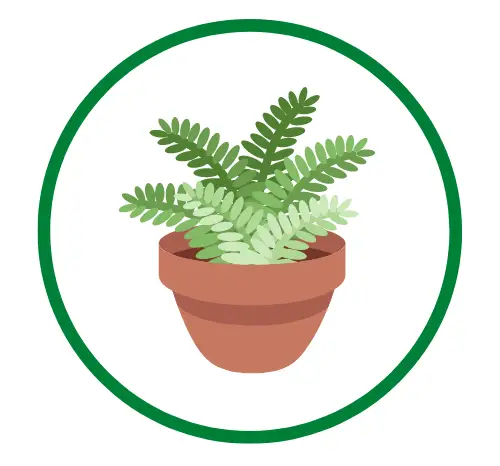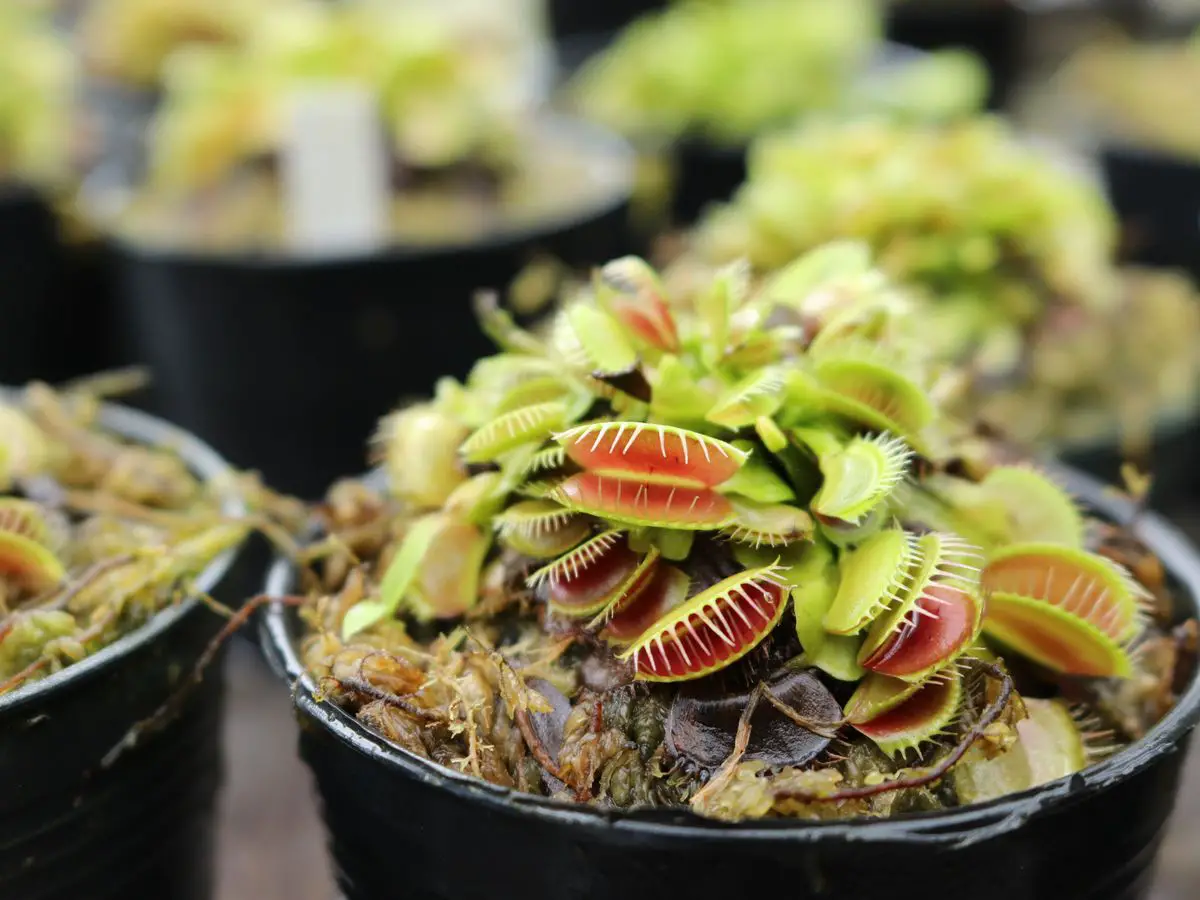Are you tired of fighting with pesky fruit flies in your house? Some people think that growing carnivorous plants such as Venus Flytraps might solve the problem. We would like to share useful information about the effectiveness of using Venus Flytraps as one of the methods of controlling the population of fruit flies.
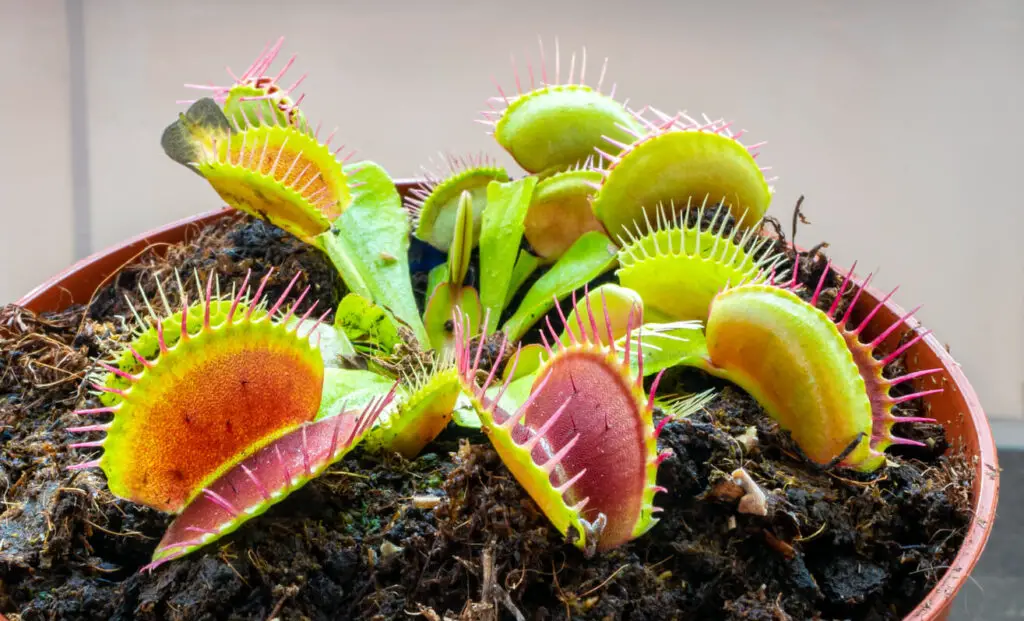
If you grow Venus Flytraps, bear in mind, that big plants won’t eat them.
Fruit flies are too small for the big Venus Flytraps and won’t be able to activate the trap’s mechanism of closing by touching the trigger hairs.
A small carnivorous plant will be able to catch a fruit fly, but we can’t say that it will be able to affect the total population of these nasty small insects.
Can you feed Venus Flytraps with fruit flies?
Venus Flytraps are popular carnivorous plants to grow at home. Their food diet includes all sorts of small insects such as fruit flies, gnats, ants, grasshoppers, small spiders, and smaller insects they can digest. The way they attract prey is simple and includes sweet nectar production that many insects sense.
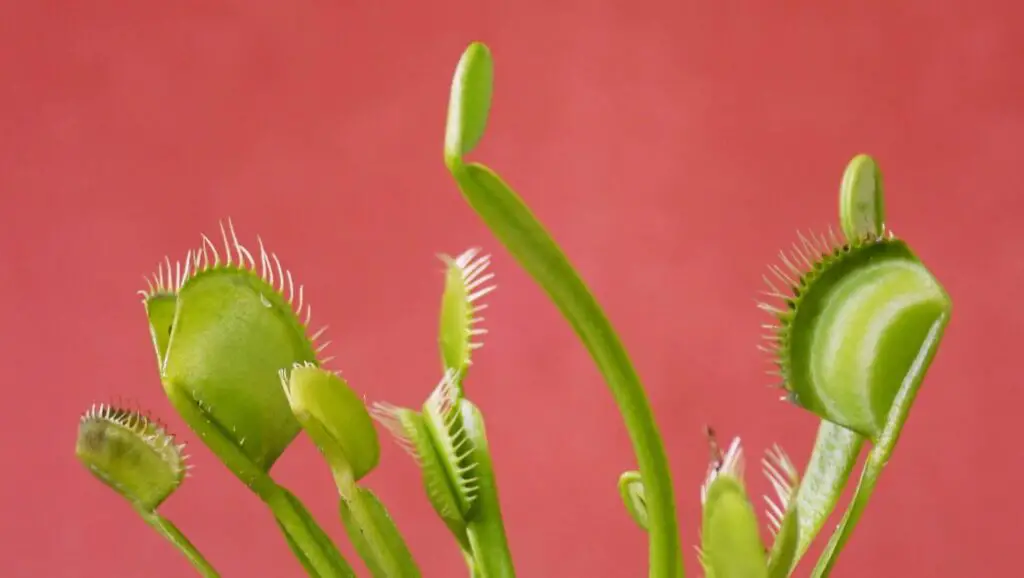
Once the insects land on the trap of the Venus Flytrap plant, they start crawling around touching the trigger hairs. That action sends the signal to the carnivorous plant and the trap shuts. Then it is the turn for the digestive enzymes to be released in order to cope with the prey the flower has caught.
An interesting fact regarding the trap closing with the insect inside is that the stimulation of the hairs has to happen at least two times within a short period of time for the trap to respond.
It takes about a week for the trap to cope with small insects such as fruit flies. Whatever might be left from their meal and their sweet nectar will be used again to attract new prey.
Even though small carnivorous plants are able to catch and digest flies, they aren’t the type of plants that usually are used for pest control. Flies population grows rapidly and a Venus Fly trap won’t cope with regulating its amount effectively.
Big carnivorous plants, especially the ones that are grown indoors, don’t bother with small prey as they know they require something more substantial.
As we already said, nature has taught Venus Flytraps to be cautious and to not waste energy along with digestive enzymes.
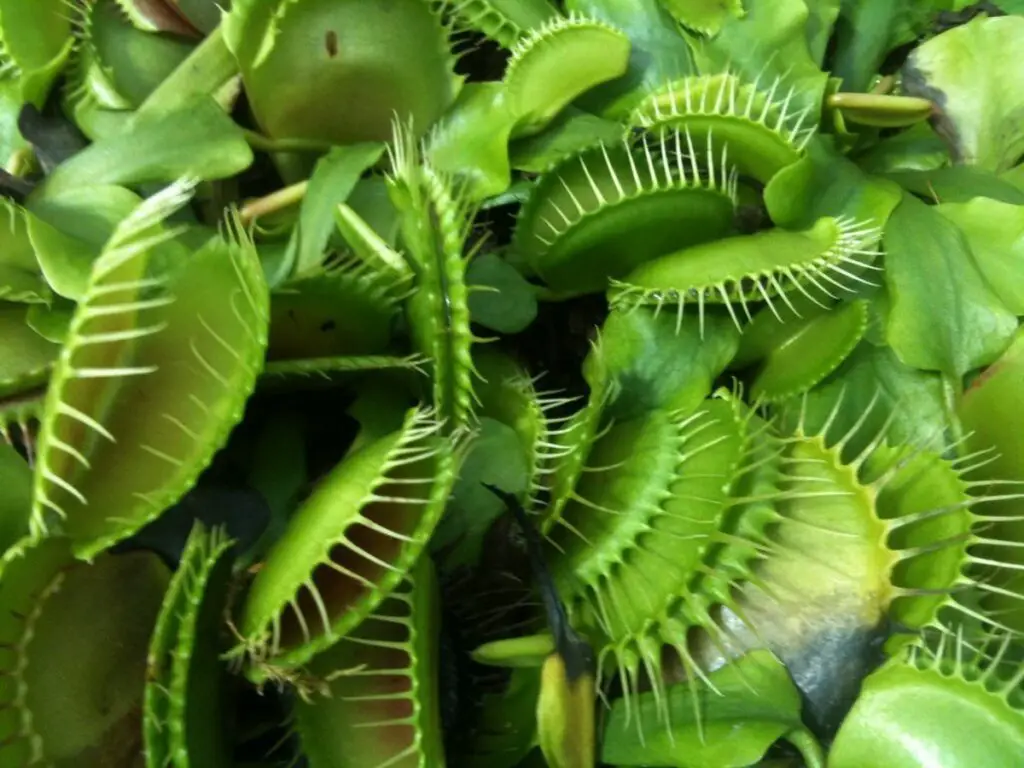
So, it will activate the traps only when it has been touched at least twice. For the carnivorous plant to eat flies, they have to be quite active once they get into the trap. And that doesn’t happen often.
What other plants can consume fruit flies?
Venus Flytraps aren’t the only carnivorous plants that eat flies. There are other carnivorous plants that can digest such insects. Unlike Venus Flytraps, they will have a great impact on the total insect population and work as pest control.
Such carnivorous plants can help you significantly. For example, the pitcher plants, Cape Sundew, Mexican butterworts, and Sarracenia.
Mexican butterworts
They don’t have to be placed under the direct sunlight. They will grow happily right on your windowsills. Catching prey is easy for them due to their leaves that have a sticky substance on top of them. They catch numerous insects at one time, unlike other flowers.
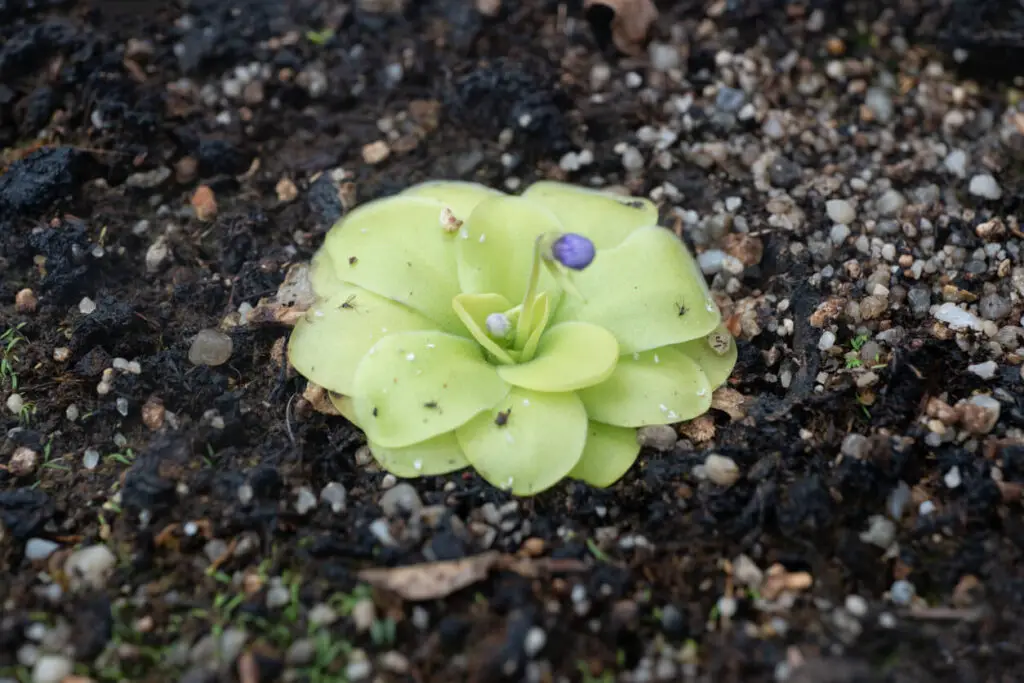
Sundews (Drosera)
Sundews are quite sensitive to the conditions they grow in. They require a lot of light and moisture. They are able to catch food by releasing dew on their leaves.
It is sticky and attracts lots of gnats. Once the food is stuck to the leaves, the flower starts producing digestive enzymes.
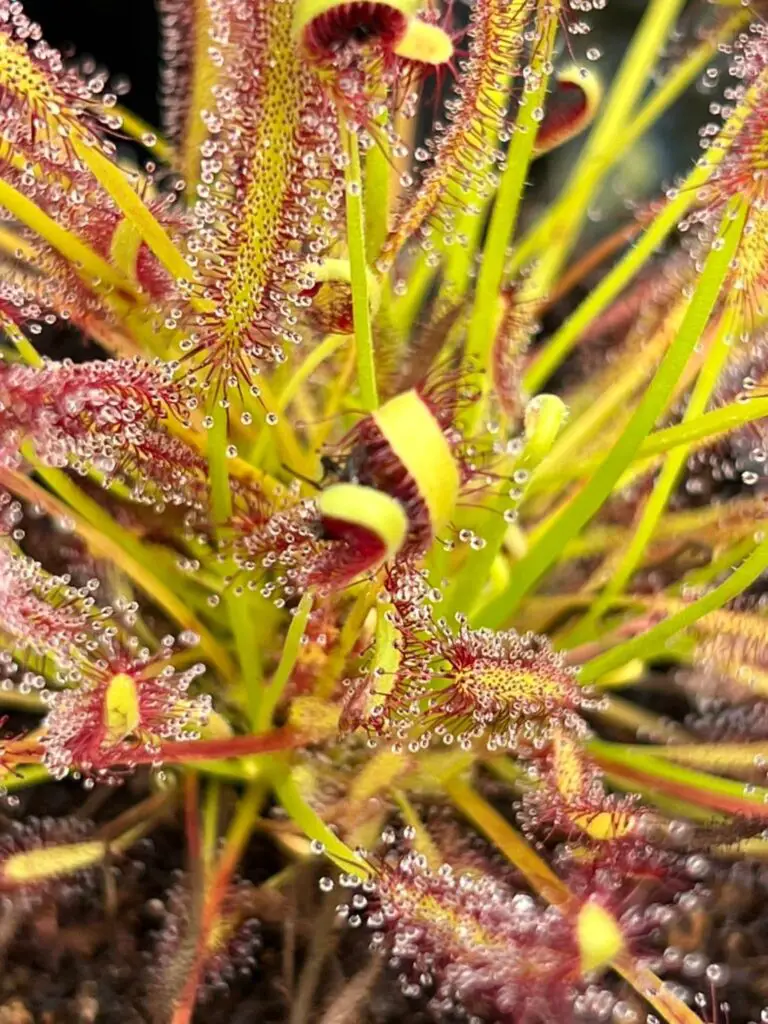
Nepenthes pitcher plant
It releases nectar and a lot of gnats get attracted to the flowers. Once they get inside the pitcher, there is no way out as the prey gets drowned in all the digestive juice the flower has inside.
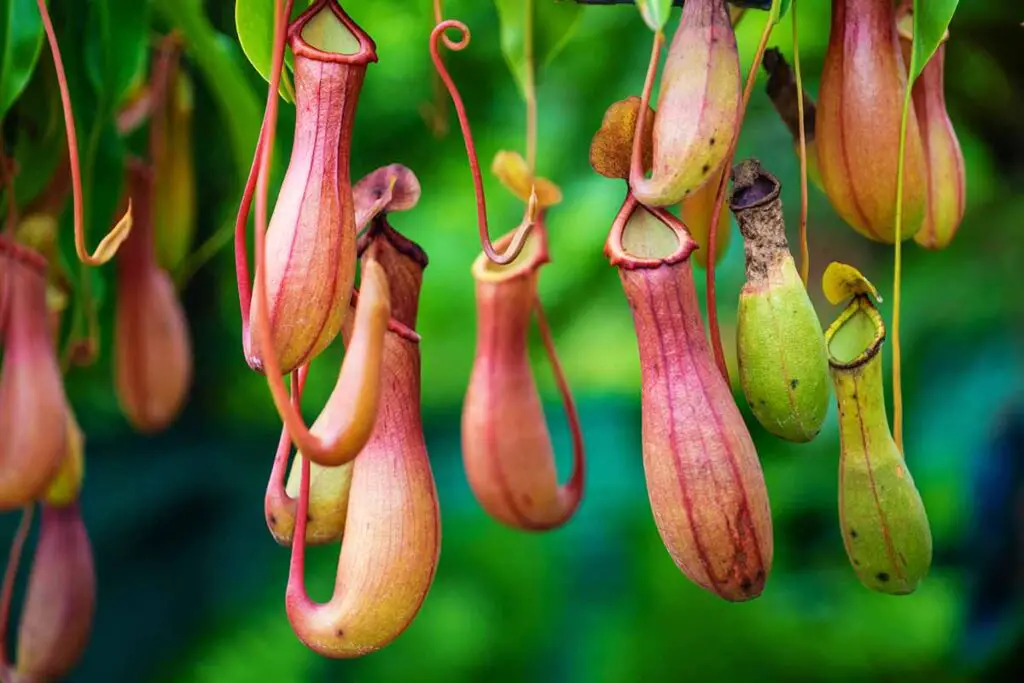
Sarracenia
This flower can be grown outdoors, as it requires a lot of light and moist soil. The catching mechanism is similar to the previous flower, and the food gets inside the pitcher, attracted by nectar.
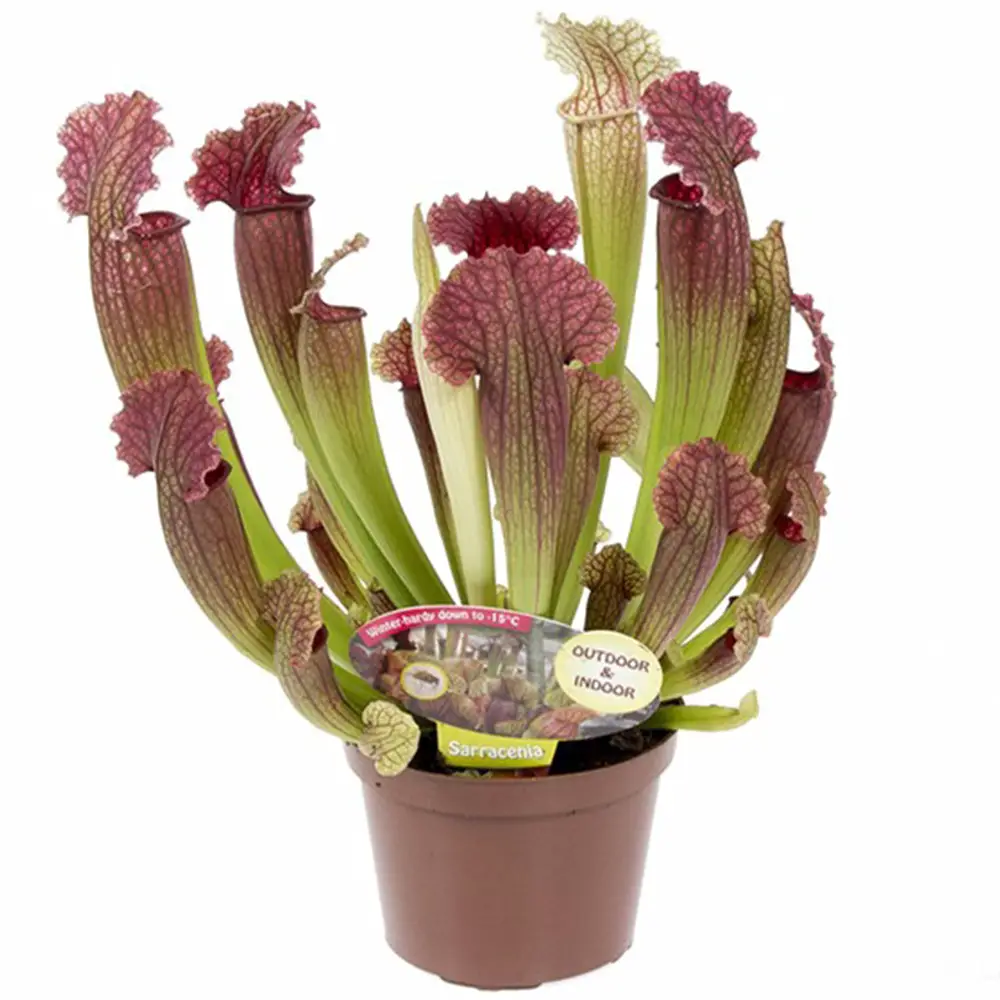
Tips on how to take care of carnivorous plants such as the Venus Fly Trap
Taking care of such a carnivorous plant as the Venus Flytrap requires you to have certain knowledge. It isn’t the easiest plant to grow, but once you know how to keep it alive, there won’t be any problems. Below are the most vital points for growing healthy carnivorous plants, including a stubborn Venus Flytrap.
1. Water carnivorous plants
When it comes to watering carnivorous plants, you have to remember that water mustn’t have any minerals and its content must be very low.
It is best to use distilled water, rather than tap water. Rainwater will also be better than tap water. The Venus Flytrap and other carnivorous plants require frequent watering.
Always make sure your carnivorous plants are growing in wet soil to ensure their health state and ability to catch prey.
2. Use appropriate soil
As you already know, carnivorous plants can’t withstand minerals present in tap water and soil. Never attempt using any fertilizer as Venus Flytraps won’t like it and there is a high chance it is going to die.
Other carnivorous plants are exactly the same. You should purchase special soil made for such plants, as it will have the right amount of ingredients to make the plants happy.
Choosing the correct soil mixture is crucial for the plants grown indoors. You have to make sure the conditions your Venus Flytrap grows in, are as close to its natural habitat as it can be.
3. Consider the correct lighting
If you grow a Venus Flytrap at home you should remember that in natural habitat these plants are exposed to full sun. That means you have to create a similar environment and set up the appropriate lights at home, so your plant feels comfortable and grows happy.
4. Follow the dormancy period
Don’t forget about the winter dormancy that most plants have. That includes Venus Flytraps as well. They have to have a few months a year when they aren’t touched by anything so they can rest. During this time, a plant doesn’t consume any insect. The traps aren’t responding to anything and don’t catch any insects.
When you don’t follow the correct care procedure and skip the vital part of the Venus Flytrap development, your plant might even die. It is important for the plants grown indoors.
5. Don’t forget about the correct feeding process
For the Venus Flytraps that grow outdoors, there shouldn’t be any interference with the feeding process, as they catch insects on their own. A Venus flytrap, that grows inside, requires you to feed it at least once a month, so it can get all the necessary nutrients. Even though it isn’t compulsory, you will have a healthier plant if it consumes insects occasionally.
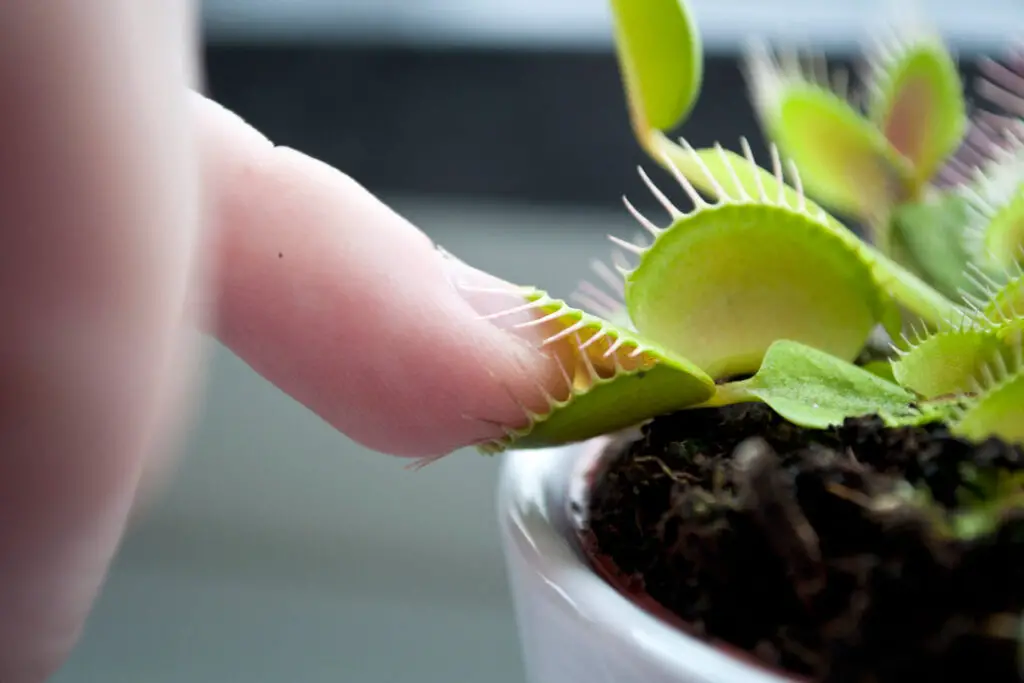
FAQ
Do Venus flytraps work on fruit flies?
Even though Venus Flytraps are able to consume fruit flies, they aren’t the perfect example of pest control. Only small plants are able to catch a fly. Once the trap closes, it takes about a week to digest the insect. By the time the Venus Flytrap is finished and opens its trap, many more flies are flying around the area.
What is the best plant to eat a fruit fly?
The best plants to grow that can actually change the fly population number are Mexican butterwort. This plant doesn’t require to be placed under the sun, and it is not fussy with soil like a Venus Flytrap.
You can leave these plants to grow on your windowsill. They consume a lot of insects, including the flies. Due to having sticky leaves, they can regulate the population of gnats.
How many flies can a Venus flytrap eat?
A Venus flytrap has a few traps, and each of those traps can cope with just one fly at a time. It takes about a week to process a prey. Only after that, the trap will open again. As you can see, a single Venus Flytrap doesn’t consume much and can’t be used as pest control, regulating the population of flies and other insects.
What can’t Venus flytraps eat?
If you grow Venus Flytraps indoors, it is important to support their natural diet. That includes feeding them the insects that they are able to catch in their natural habitat, such as spiders.
Don’t give them anything big and hard they won’t be able to cope with. It must be tiny insects placed into the flytrap. You have to help to irritate the hairs a couple of times to activate the closing motion.
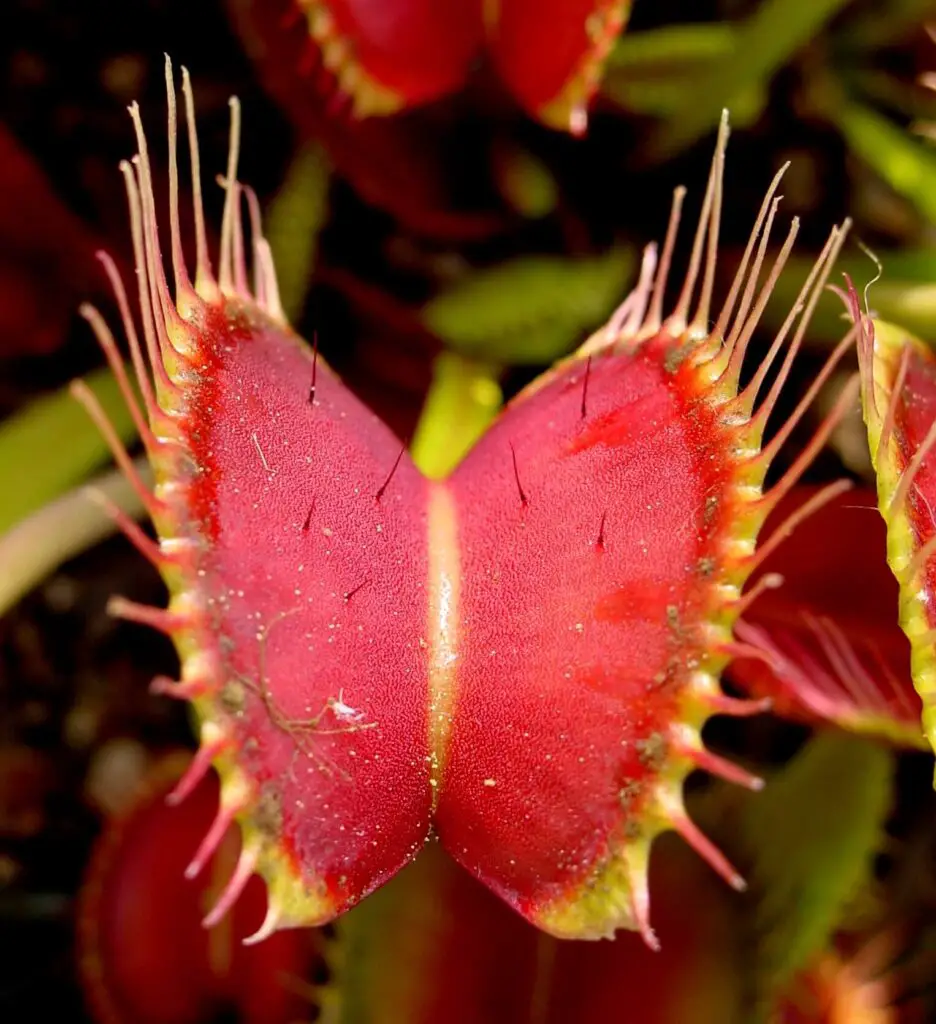
In the end
As you have found out, Venus Flytraps can eat such insects as flies. Only small plants will be able to respond to the irritation caused by a fly and close the trap to catch it.
Bigger plants won’t feel anything and won’t be able to catch them. That is why you don’t choose Venus Flytraps if you need help with controlling the insect’s population.
These plants aren’t easy to grow as they require you to water them often using distilled water and the soil shouldn’t consist of minerals.
If you are looking for plants that will be able to consume lots of insects, look for other carnivorous flowers described in the article above. Please share this useful information with others, so they can use this knowledge as well.
